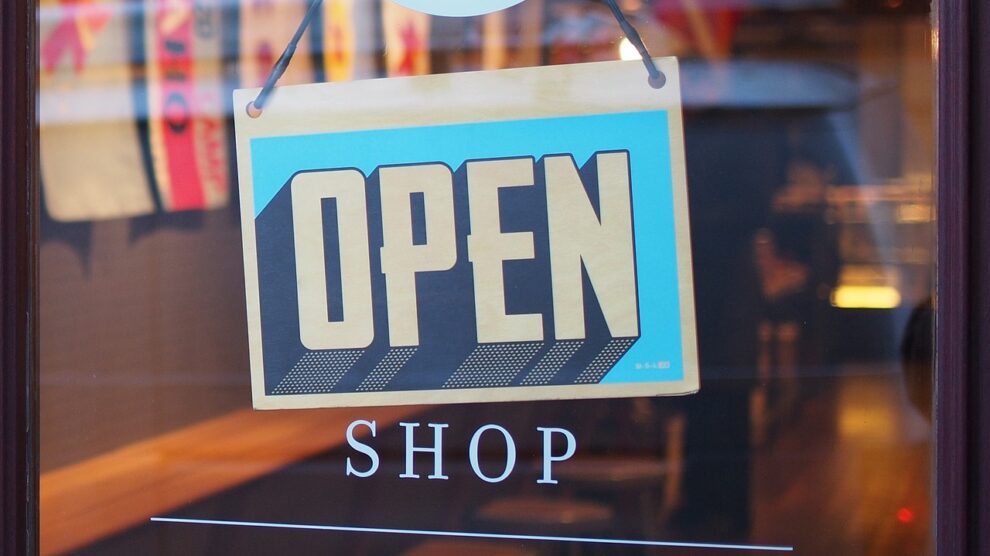An apocalypse has been looming over the shopping industry for almost a decade, but e-tailing hasn’t managed to squeeze out brick-and-mortar stores. However, physical stores continue to serve as ‘showrooms’ where people come to eye the products they fancy then leave and buy them online. Such behavior affects conventional stores’ financial records, and they indeed have to reinvent the ways they operate and treat their customers.
In short, retailers need to make brick-and-mortar just one more channel in the omnichannel reality. The most important thing here is to provide consistent customer experience across all channels, both online and offline.
Such new ‘phygital’ models usually require the use of a sophisticated enterprise software solution, but the stakes are high when there’s the need to win the twenty-first-century customer. Some of these new models are described below, but more innovations are surely to emerge in the next few years.
The Unmanned Store
The first staff-free convenience shop Näraffär was opened in Sweden, in a small town of Viken in 2016. The residents in this region would have to travel kilometers to do their shopping if not for this small shop. It is stocked with everyday items such as bread and milk while having no staff. Shoppers just select items and purchase them using a mobile app, with digital receipts sent to them as they leave the store. Cameras have been installed to discourage shoplifting. There is only one employee, the owner, who replenishes the stock.
The concept of unmanned stores was further picked up in China both by start-ups and major players, such as Alibaba and Auchan.
The Dark Store
The term ‘dark store’ has different meanings on different continents. In the United States, a dark store is a “big-box” store from retailers such as K-Mart that has been closed due to dwindling sales. These defunct stores are unpopular in the towns where they are situated, as they pay minimal property taxes and thus affect the town’s coffers.
The UK version of the dark store, which has been adopted in Europe, is essentially a distribution warehouse for a retailer’s online sales. It is built with the same layout as a normal retail outlet and provisioned in the same way. However, there’s no public access, only for the employees.
The staff fulfil online orders by picking goods from the shelves, acting as a proxy shopper. Some stores have robots that assist with the picking. This store model gained traction in other countries as well. For example, in Australia, two big retailers, Coles and Woolworths, opened dark stores in Melbourne and Sydney.
From E-tail to Retail—New Stores on the Block
While most major retailers, like Best Buy, are congratulating themselves on their journey to the omnichannel world, there is no reason for complacency. Online stores go upstream and start to build brick-and-mortar stores, notably Amazon.
In November 2015, Amazon made its first move, opening a bookstore in Seattle. When one considers the demise and belt-tightening that has happened in the last eight-ten years in this market, mainly caused by Amazon, this move might seem puzzling, especially after the second store’s opening in San Diego the following year.
The Amazon bookstore does not have a traditional layout—its layout mimics the online bookstore: books are displayed cover-first on the shelves, and there are recommendations and tips similar to those online. Prominently displayed are all the Amazon gadgets and appliances, from Kindles to power cables. However, there are no prices on the shelves. To know the price, you need to scan the title or item you want via the Price Check app on your phone. There are roughly 5,000 titles in the store, and you can buy the rest online.
Amazon has managed to combine ‘showrooming’ and ‘webrooming’ in one compact store: you can buy the book in the store having checked the price online, or you can buy the book online at Amazon.com, having browsed it in the store. The concept proves successful—there have been 17 Amazon bookstores as of 2018, with plans to open more.
Amazon is a company on the restless side. In 2018, they launched a cashier-less convenience store in Seattle where you basically pick up what you want and just… walk out. The store uses advanced technologies, such as computer vision, deep learning, and sensor fusion, to automate checkout and eliminate the very concept of queues.
Customers need to download the Amazon Go app before a visit. The store is equipped with multiple cameras and weight sensors. Once a visitor picks something up from the shelf, it’s automatically added to the virtual shopping cart. When the customer leaves the store, their associated account is charged accordingly.
As of 2019, there are 18 Amazon Go locations around the US. Once again Amazon poses viable threats to other retailers by pursuing painless customer experience.
Reverse-Engineering of the Online Business
Other examples of e-tailers going brick-and-mortar are Warby Parker selling eyeglasses, and Birchbox selling personal care products. Traditionally, customers like to interact with such products, trying on sunglasses and testing fragrances and creams. A physical store allows them to do this, and they can hop between different channels before they purchase.
Perhaps, this is the future of retail: to build a following online and then create a retail footprint where the bulk of your customers can be geolocated. Showrooms, unmanned stores, and dark stores will probably become part of the mix.
Lessons for Traditional Retailers
While some traditional retailers are doing their best to catch up, many of them have not yet gone truly omnichannel. They will now have to re-examine their customer experience strategies. While it’s not a must to follow Amazon Go’s cue, it’s important to be present on the channels where your customers are.
One thing is clear, though: retail is not dead. Consumers (well, most of them) still enjoy shopping and interacting with products, trying on clothing and shoes (and then ordering them from Zappos), smelling fragrances, opening a refrigerator and checking out the shelf space. Augmented reality can offer substitutes for these experiences, but an app that shows you what an outfit would look like on you still does not give you an idea of whether it fits or is comfortable.
Digital shopping is sure to bring further innovations to retail as we know it. The key takeaway is that it is not about the technology, it is about enhancing customer experience.





